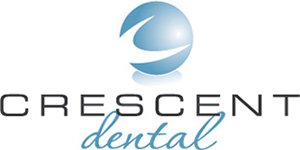Tooth Extractions
A tooth extraction refers to the procedure of removing a tooth from its socket.
Procedure On Removing A Tooth
First, a local anesthetic is applied to make the procedure more comfortable. In some cases your dentist will elect to use nitrous oxide gas in addition to the anesthetic.
A dental instrument called an elevator is used to wiggle the tooth in its socket. After the tooth is loosened it is removed using forceps.
Extraction’s Possible Complications
Like most other procedures, tooth extraction is not free of possible complications. You should be aware that there is a slight chance of infection, tenderness, prolonged bleeding, dry socket and loosening of neighboring teeth or their fillings or crowns.
Another rare possibility is of an upper tooth getting displaced into the sinus. Lastly, jaw fracture and temporary or permanent numbness is also very rare possibilities.
Importance Of Replacing The Missing Tooth
You need to be aware of the importance of replacing this missing tooth. Why? Once a tooth is removed, the space created by the missing tooth will allow the surrounding teeth to shift into that space. This shift could cause a misalignment in your mouth that can result in chewing or jaw-joint problems. These shifted teeth are harder to clean, making them more susceptible to gum disease, decay or even additional tooth loss.For these reasons, it’s important to replace the tooth with a dental appliance such as a bridge, a removable partial denture or an implant.
Pulling A Repairable Tooth
In some instances you may be considering the option of pulling a tooth rather than simply repairing it. While it may be less expensive in the short run, in the long run it may cost you more. As you just heard, once a tooth is pulled you still need to fill the space with a dental appliance to avoid future complications. If you add the cost of extraction plus the replacement of the tooth, you may simply be better off repairing it.
Crescent Dental Cary
2442 SW Cary Parkway Cary NC 27513
Post Operative Instruction for Extractions
Extraction wounds usually heal quickly and without complications if you take simple precautions. A blood clot must form in the tooth socket for the area to heal. Therefore, it is important to avoid activities that will disturb the clot.
1. No Smoking
2. No Drinking through a straw
3. No Rinsing for the first 24 hours
4. No Spitting
5. Limit activity for the first 24 hours
Avoid hot liquids for the first 24 hours. Drink lots of liquids and eat soft foods for the first day. After a day you can return to solid foods as soon as you can chew comfortably.
The extraction site may bleed a little for a couple of hours. Even a day later the site my ooze a bit. To help control the bleeding follow this procedure:
1. Fold clean, sterile gauze into a pad thick enough to bite and place directly on the bleeding site.
2. Close teeth firmly on the pad as to apply direct pressure.
3. Maintain pressure for approximately 30 minutes. Repeat if necessary.
After the first day, rinse very gently with warm salt water (1/2 teaspoon salt to a glass of warm water). This will help the gum tissue heal. You may rinse as often as possible.
You may feel some pain and have some swelling. The swelling should go down after around 48 to 72 hours. Use pain medication only as directed or take a mild pain reliever such as Ibuprofen, Advil, and call the office if this does not seem to work. If antibiotics are prescribed, continue to take them for the indicated length of time, even if the symptoms and signs of infection are gone.
Call the office if you have heavy bleeding, severe pain, increased or continued swelling after more then 3-4 days.
